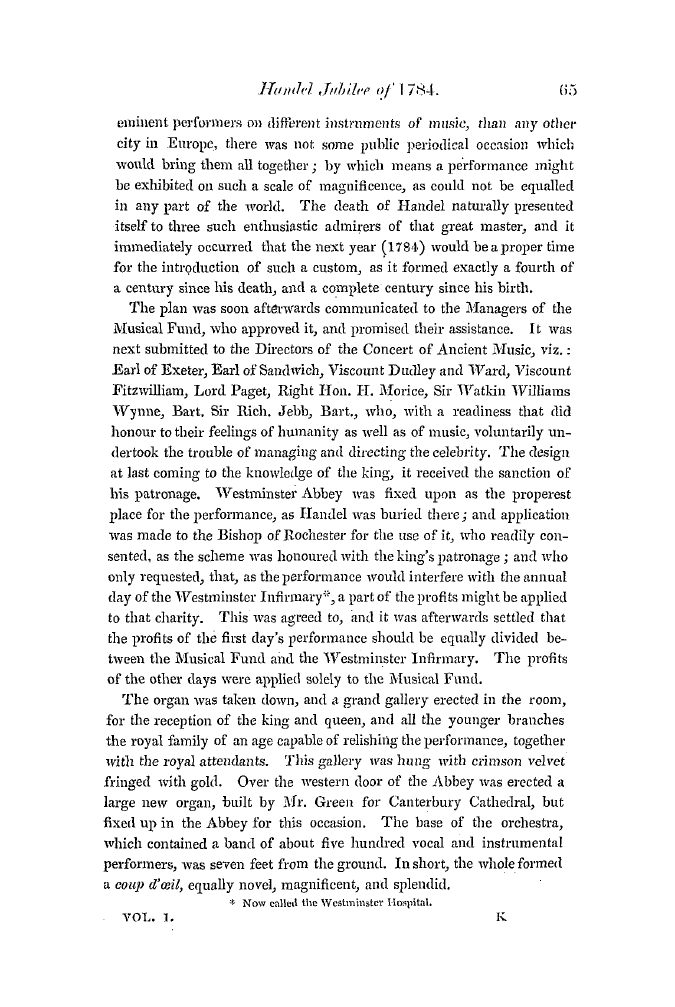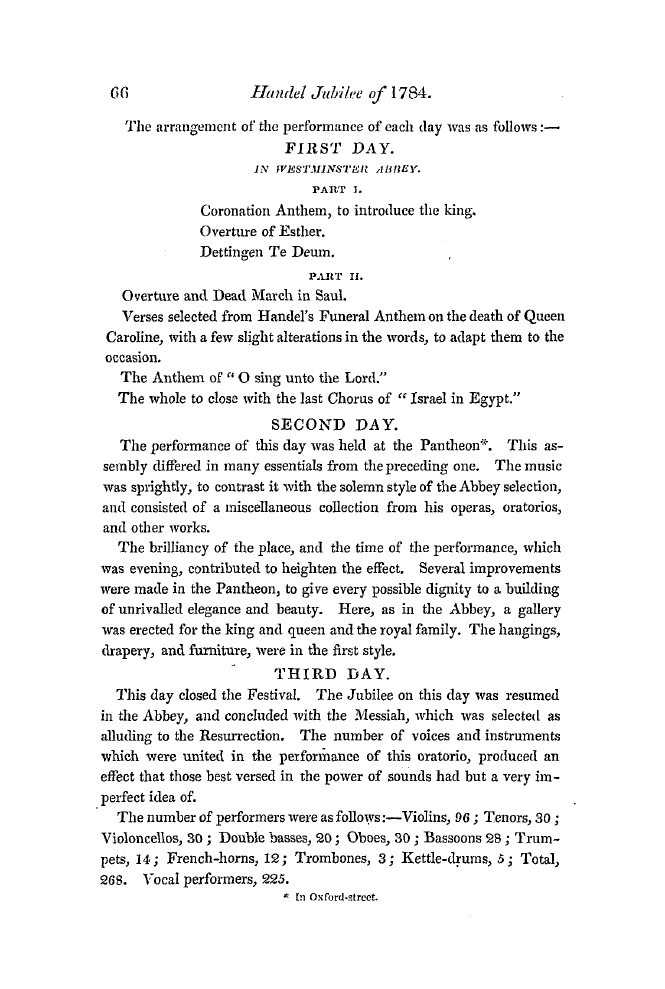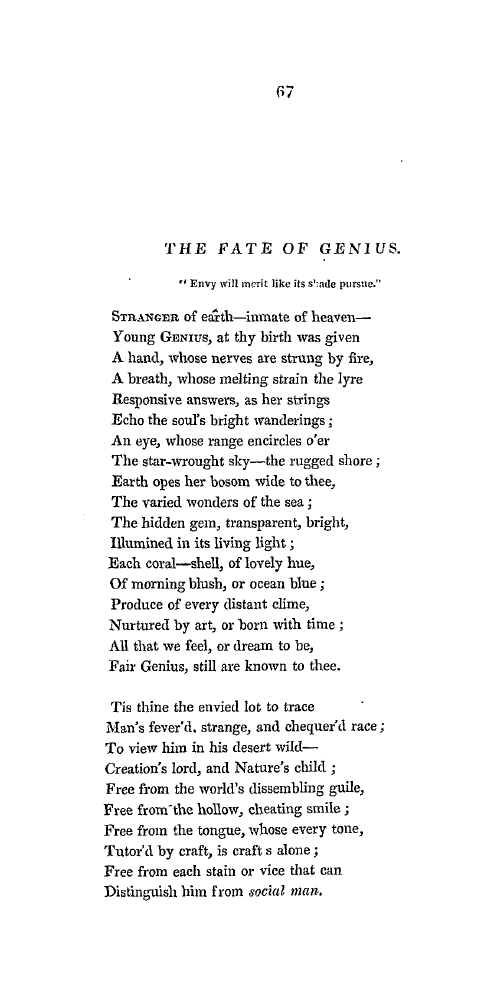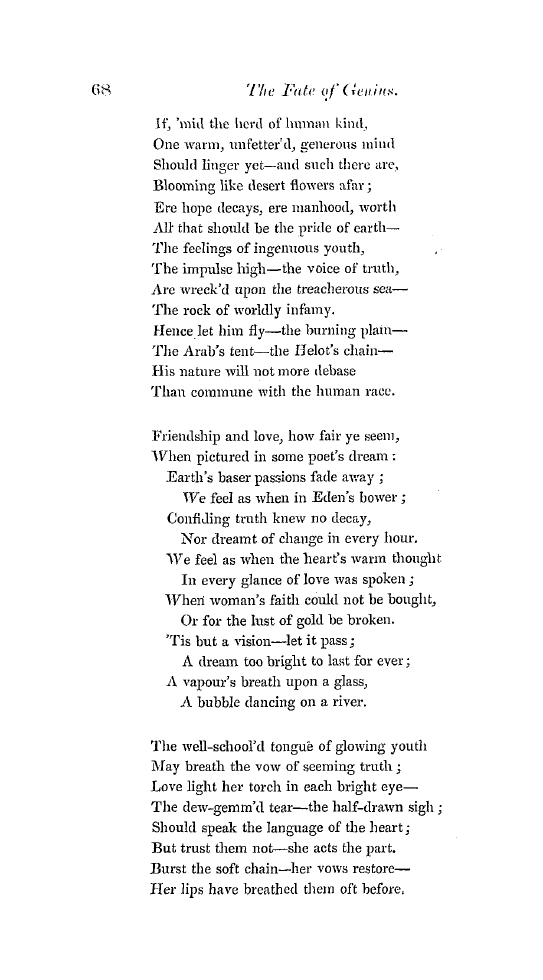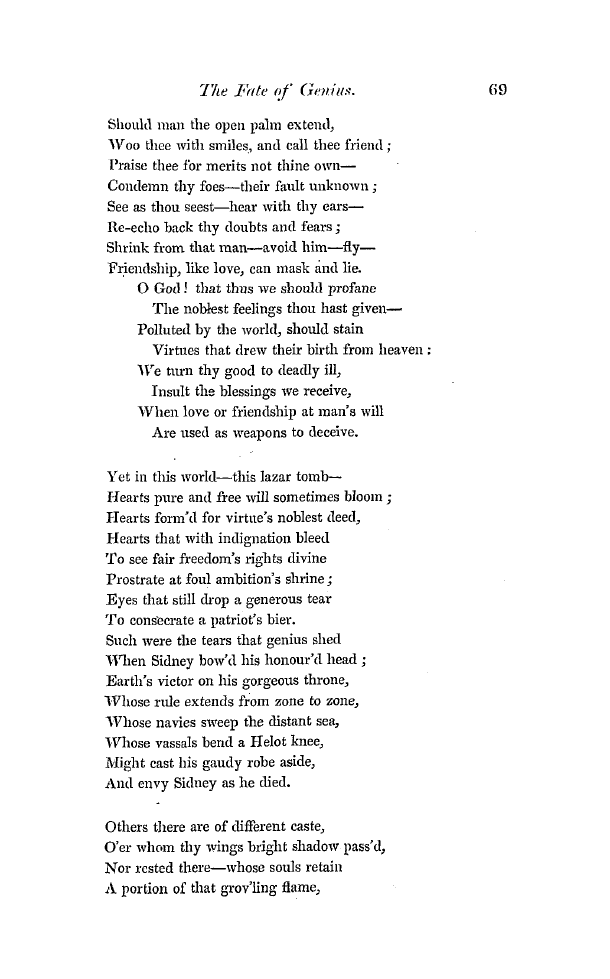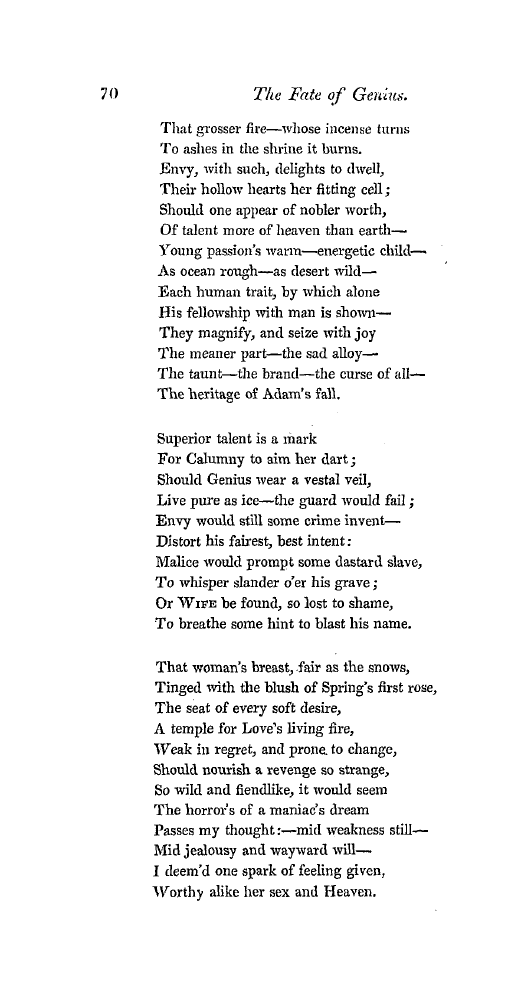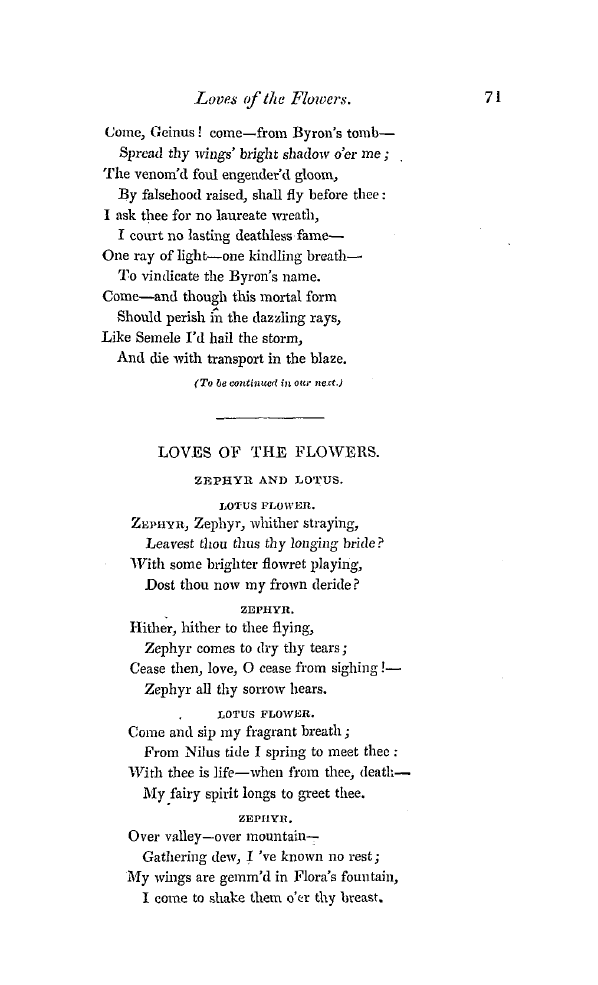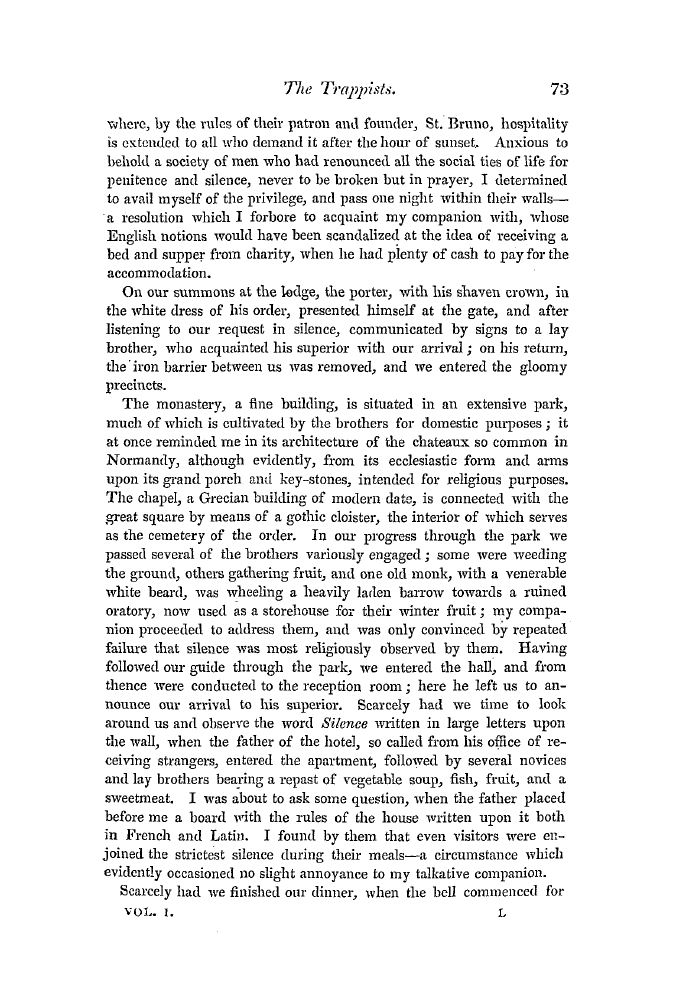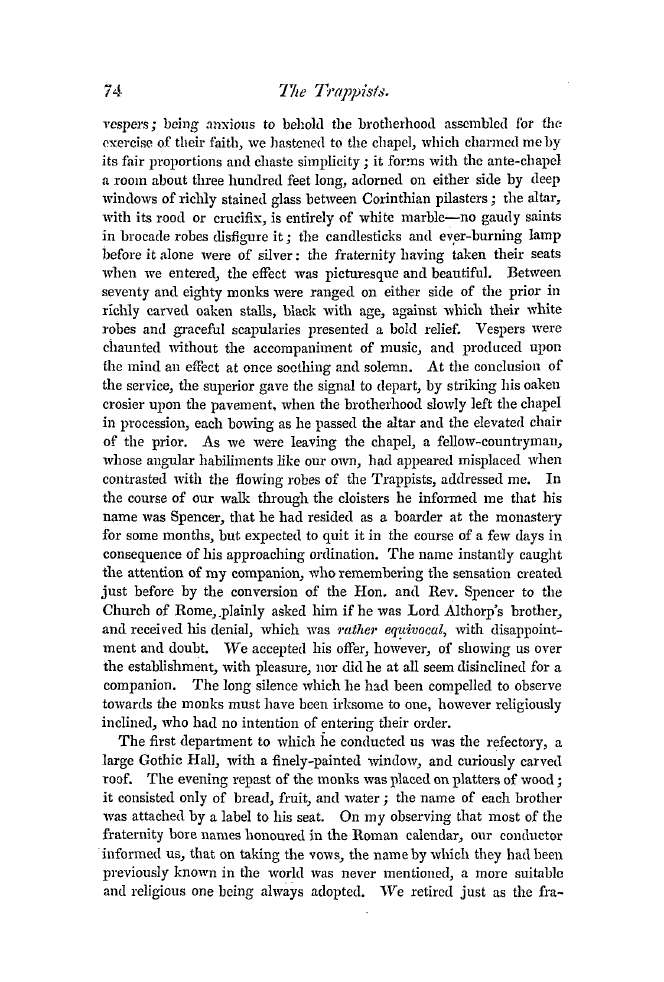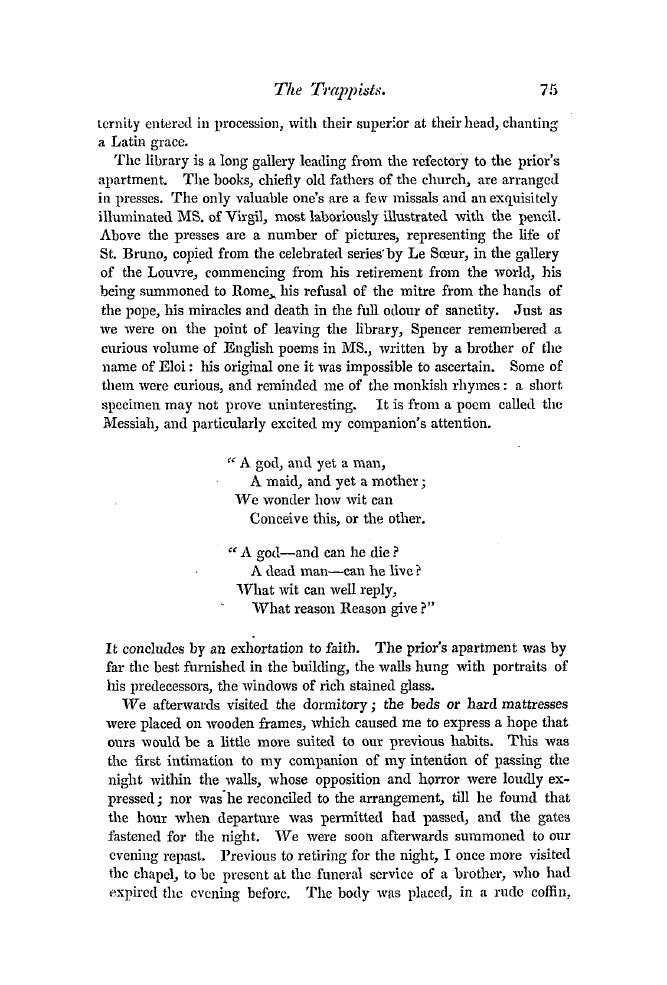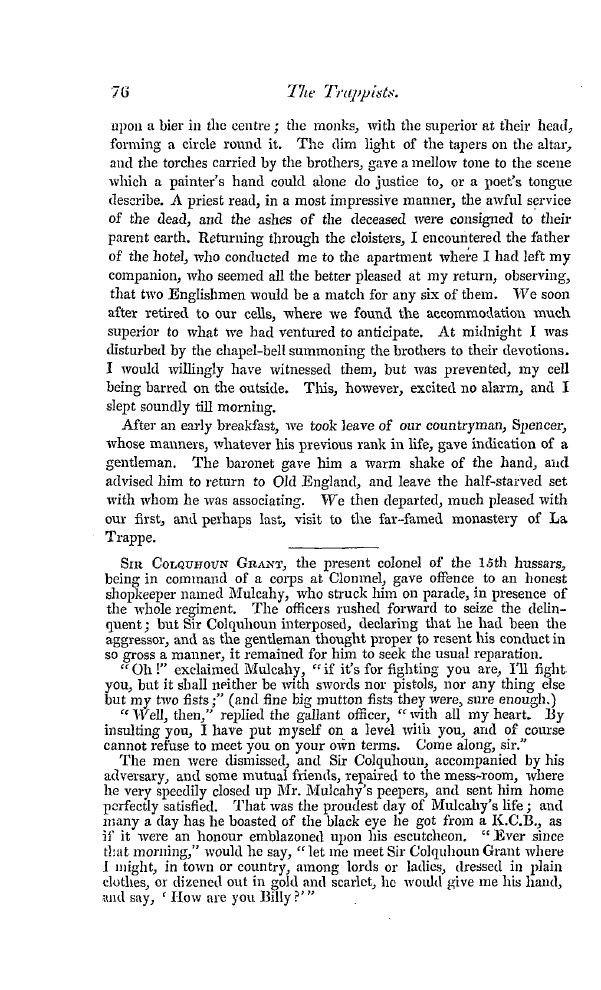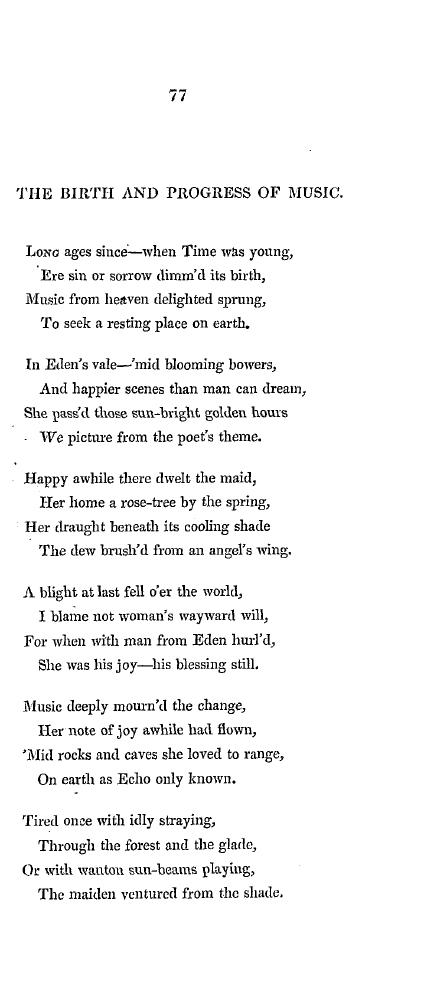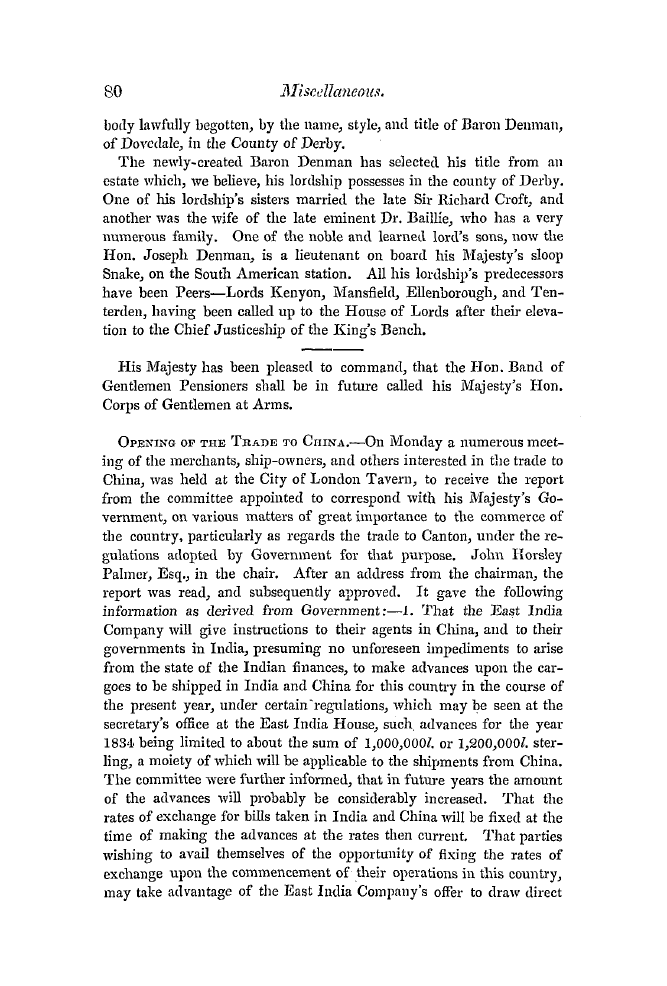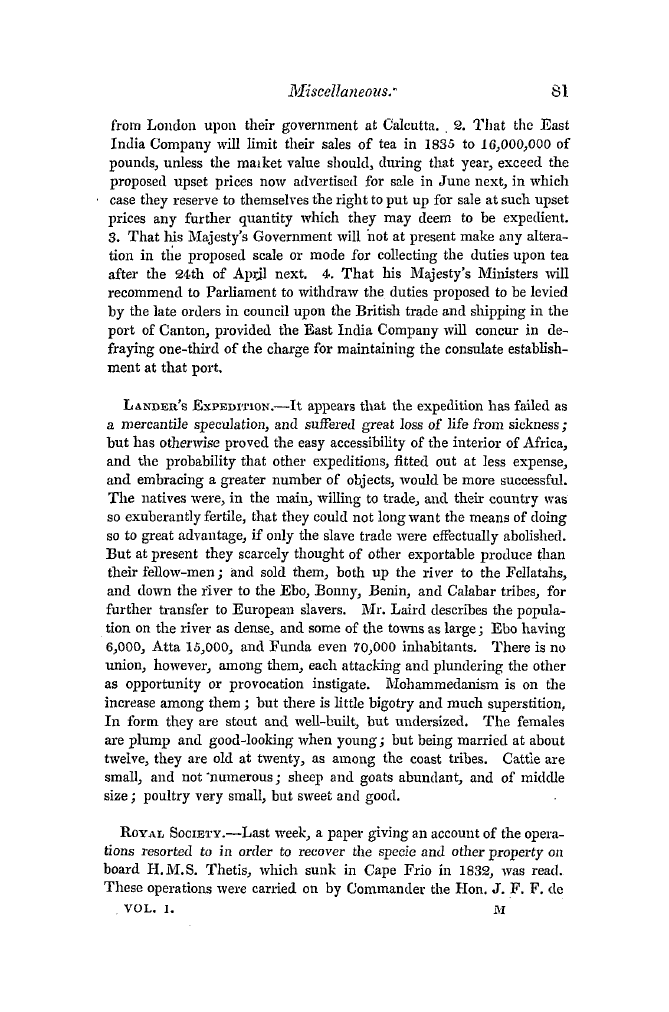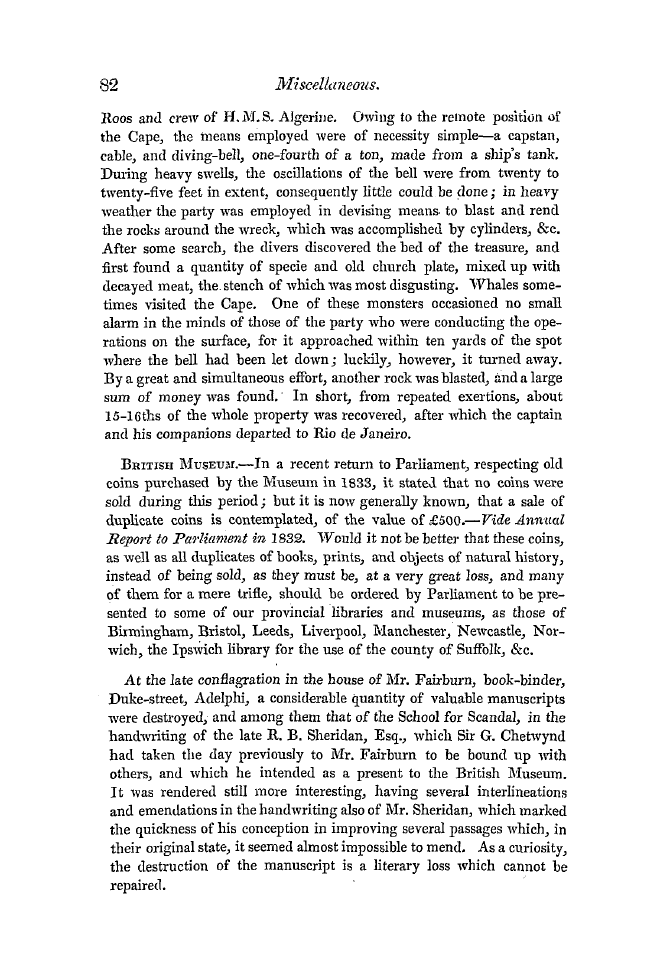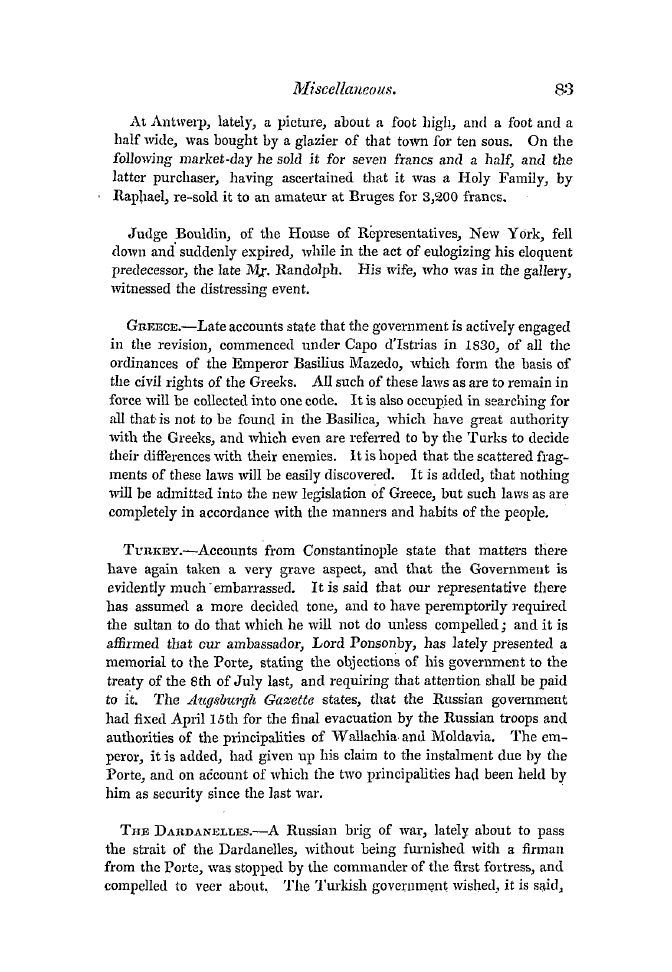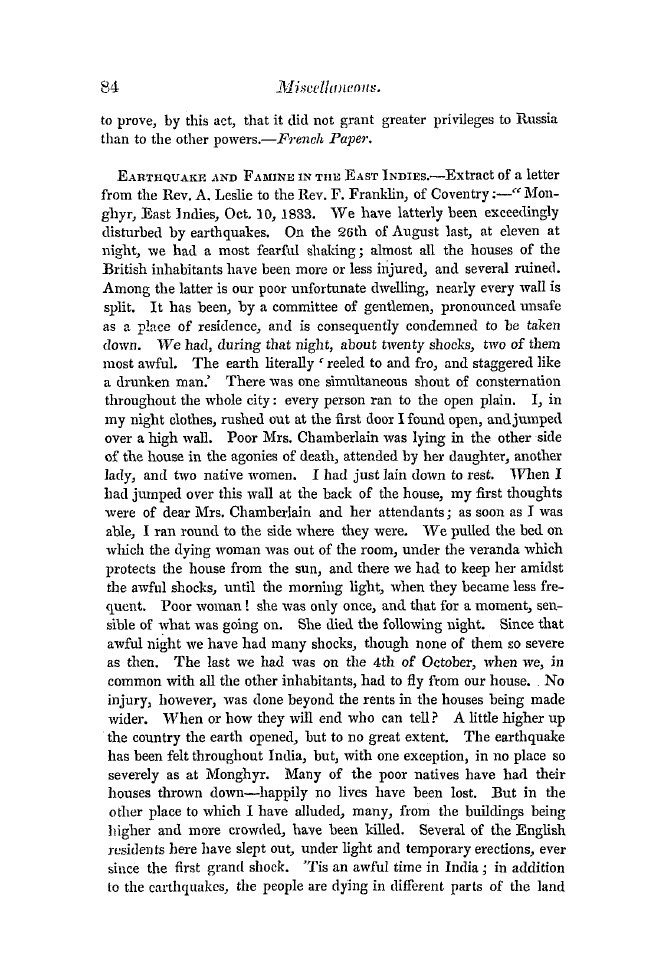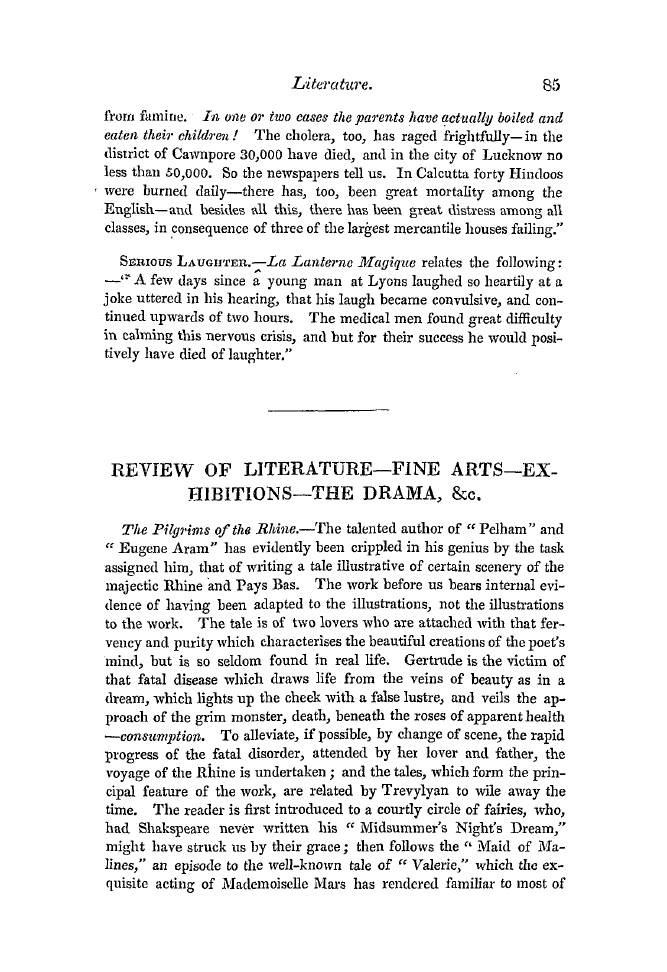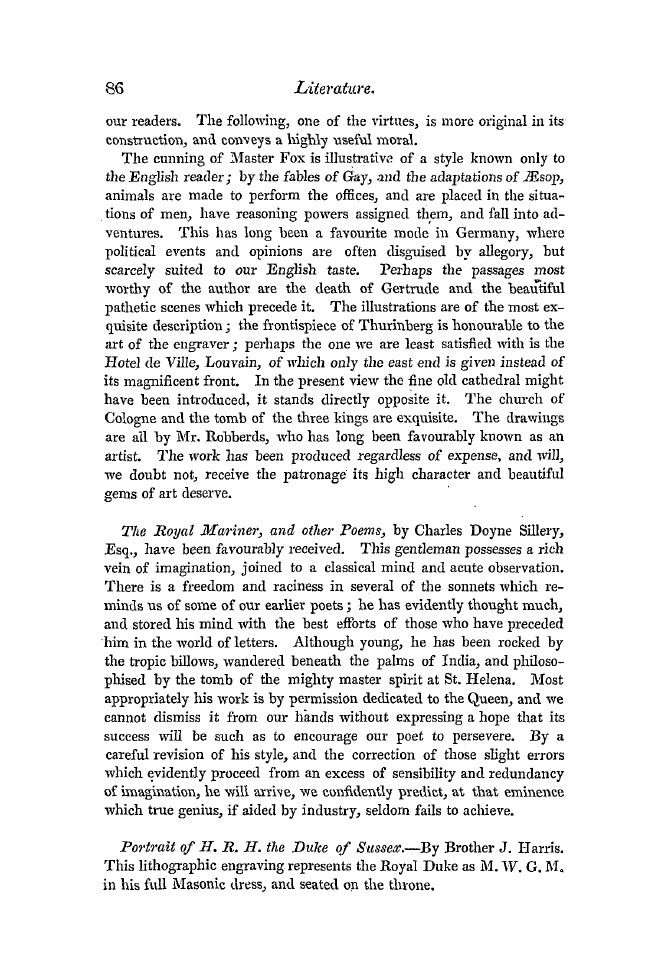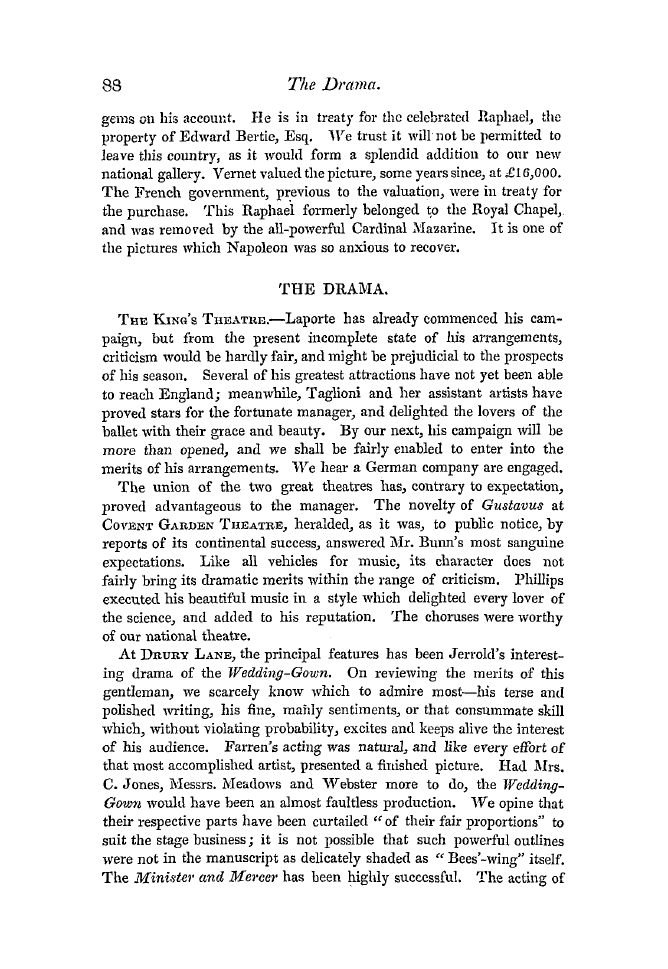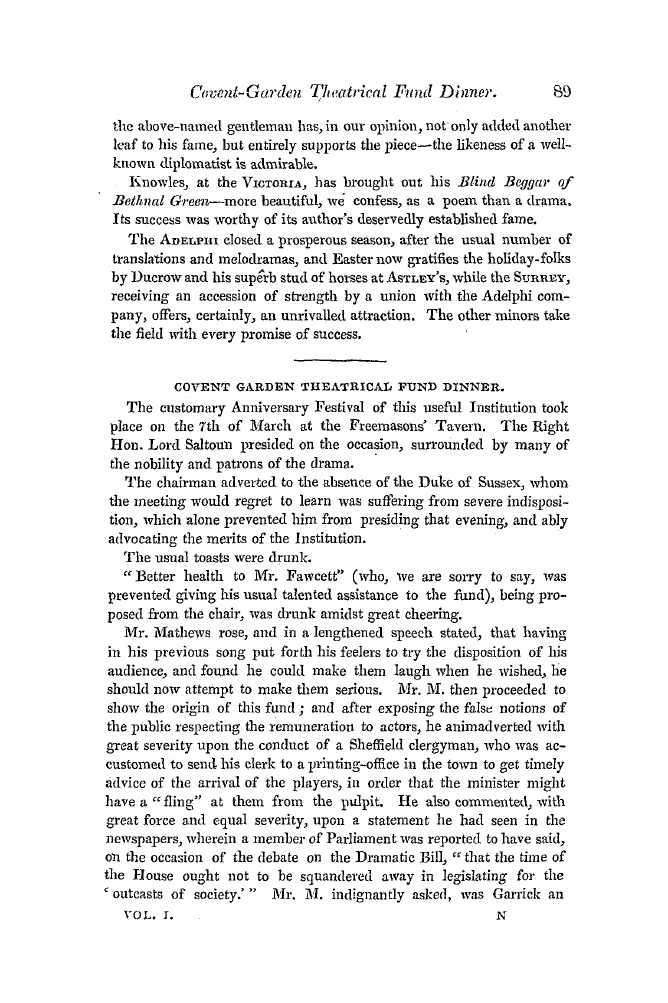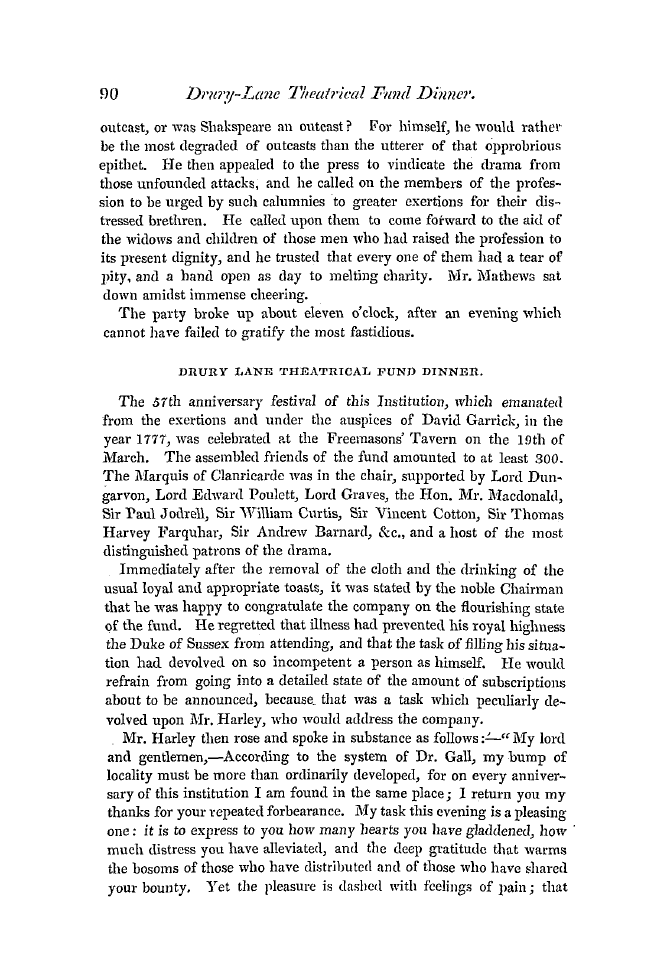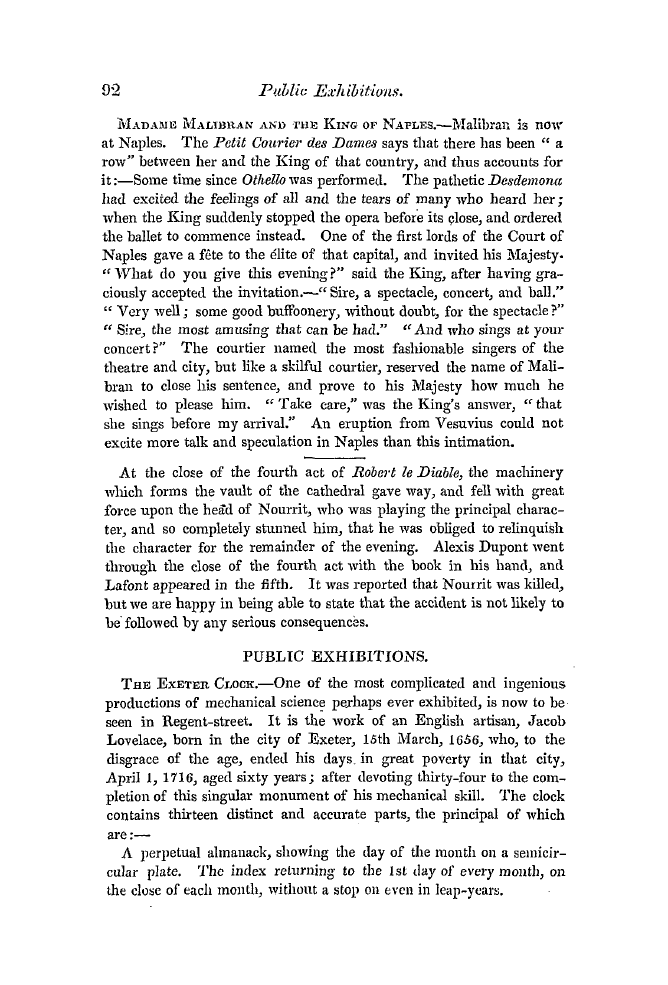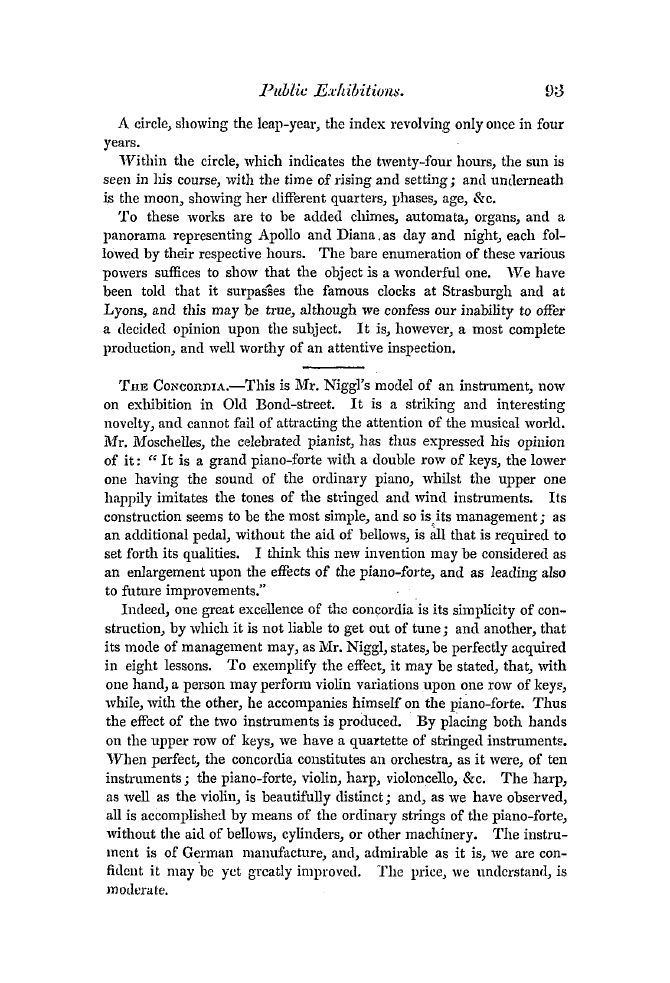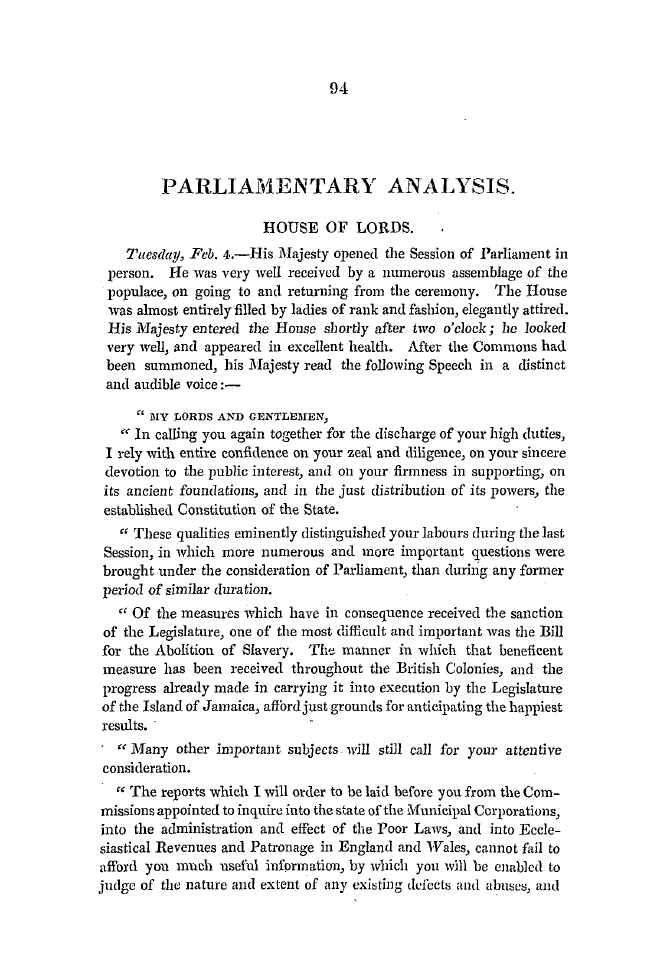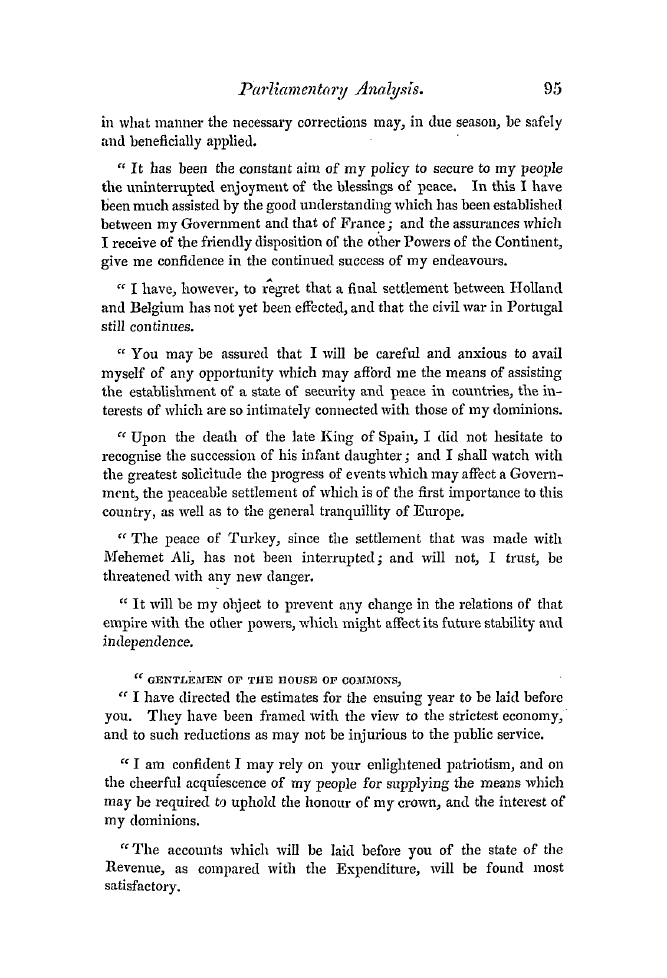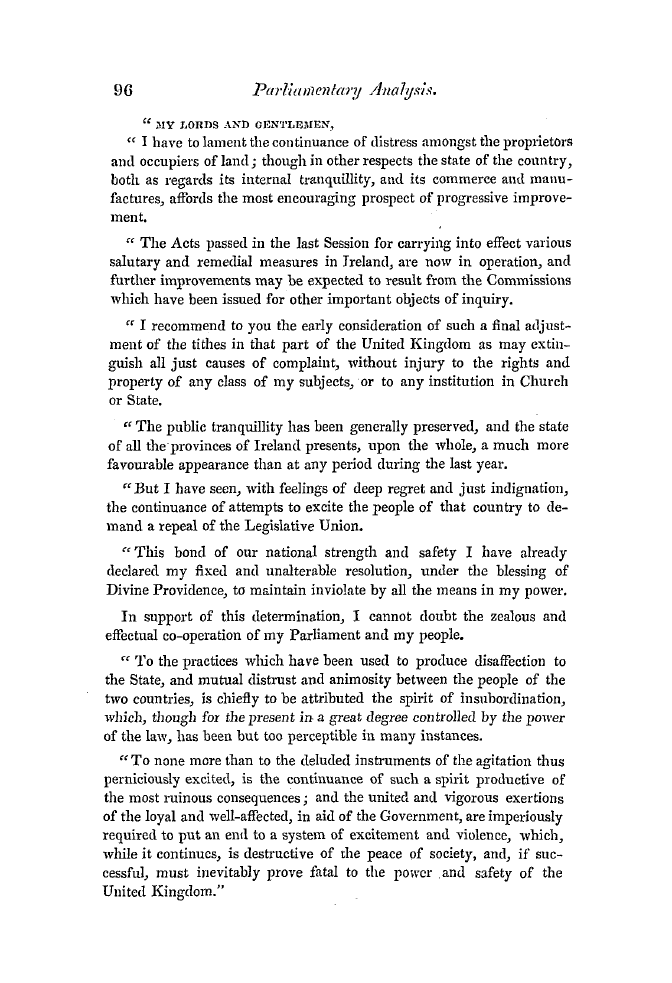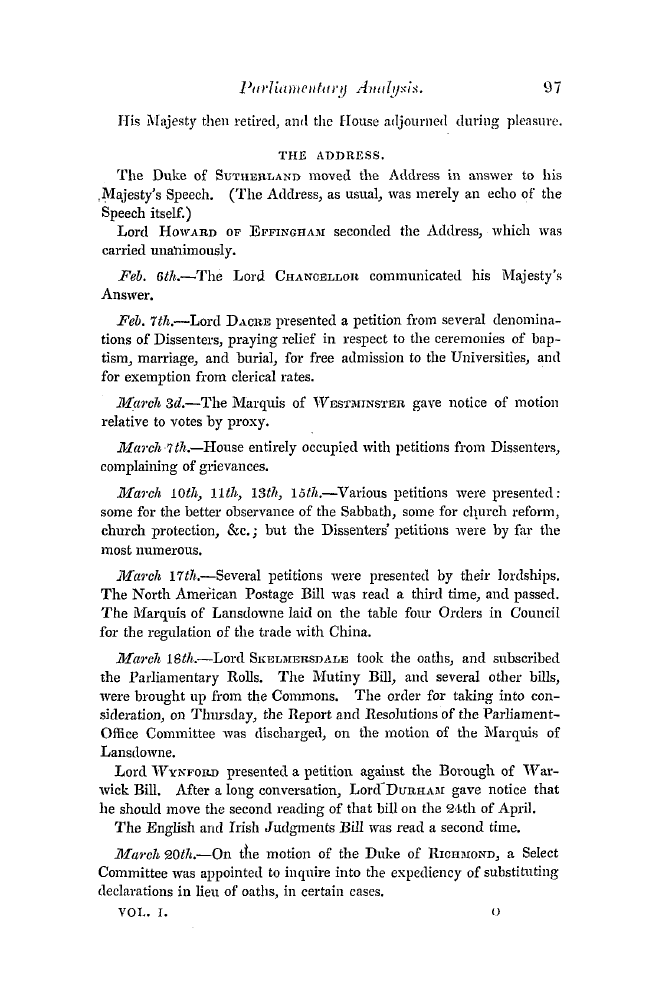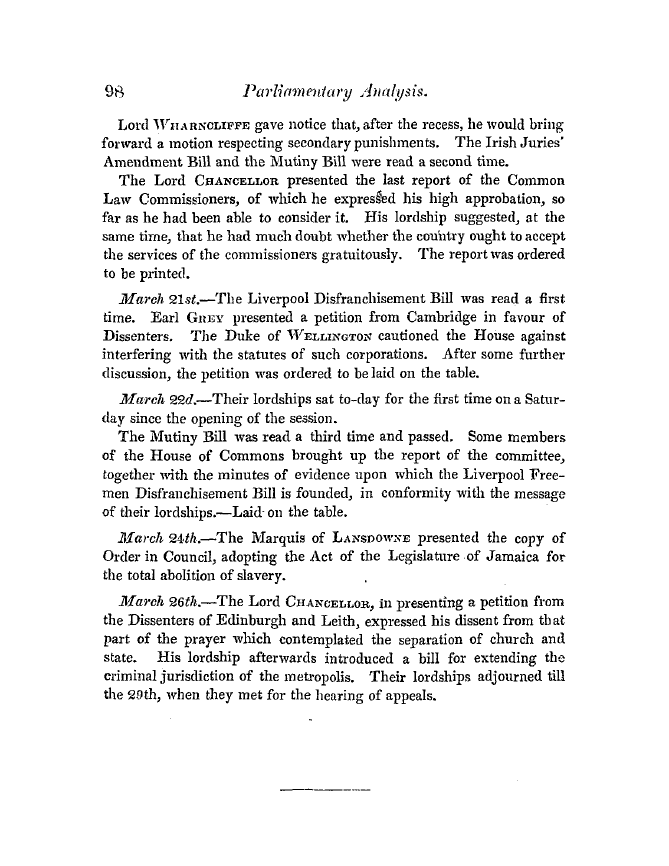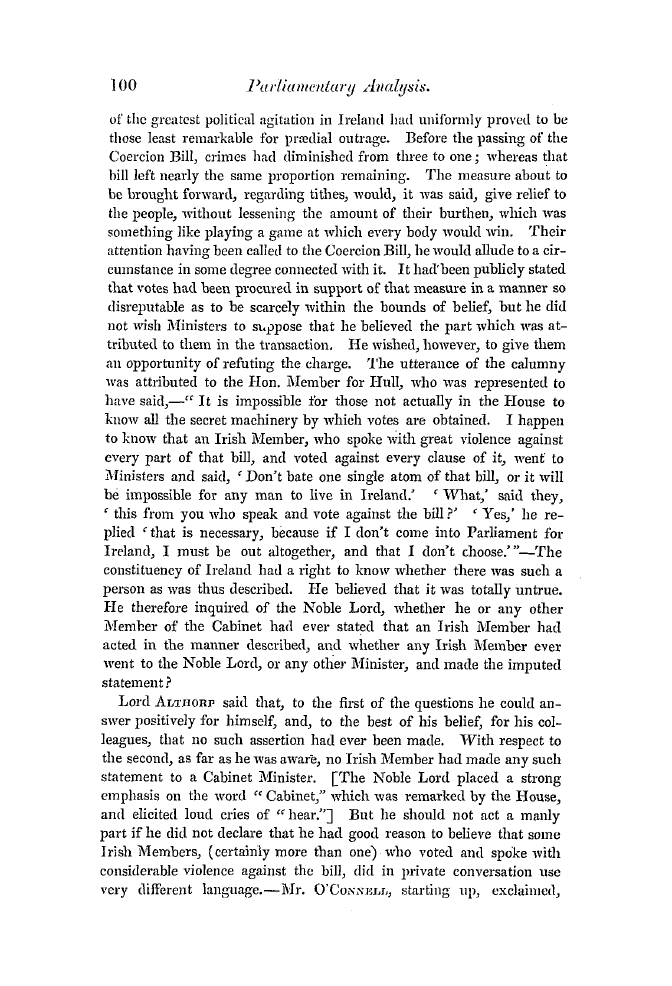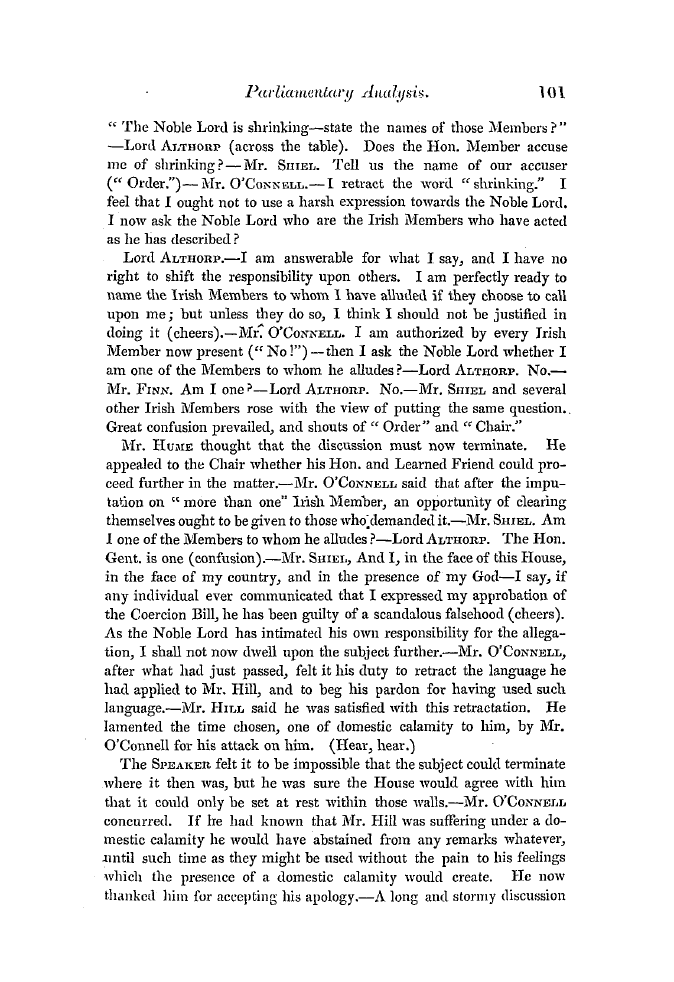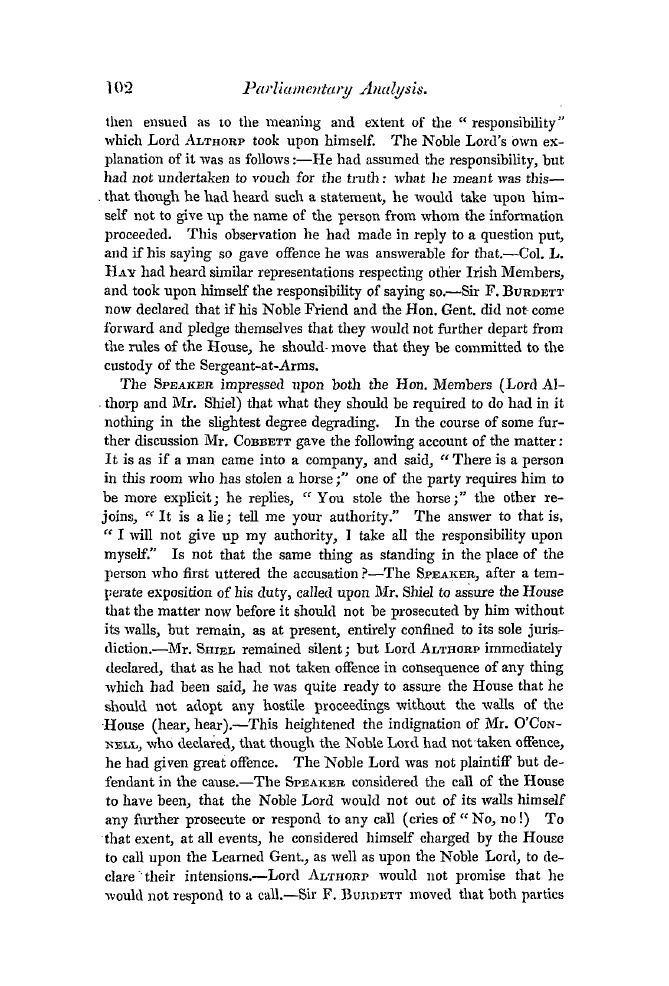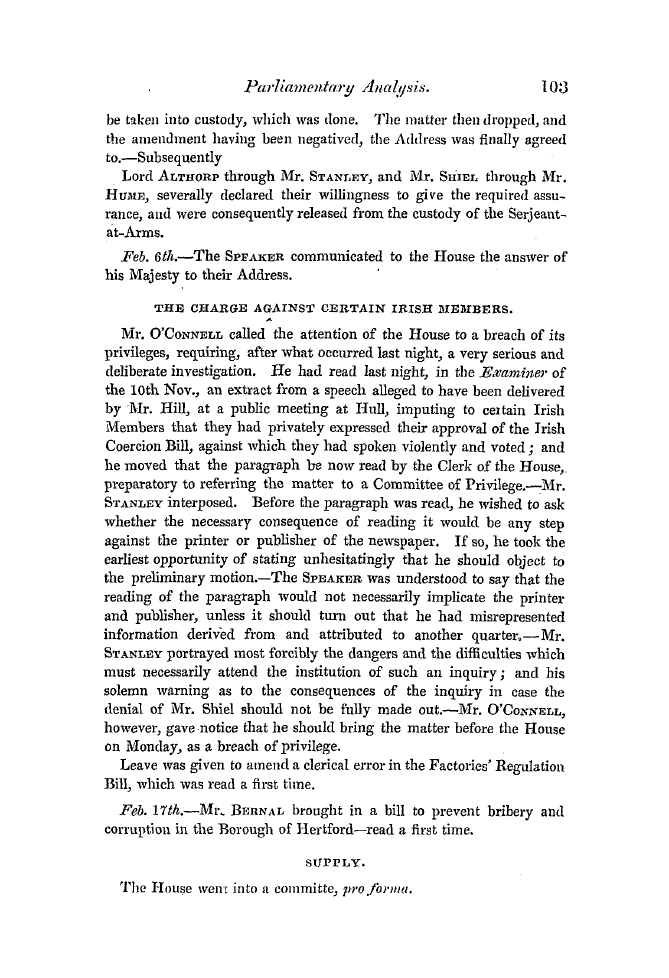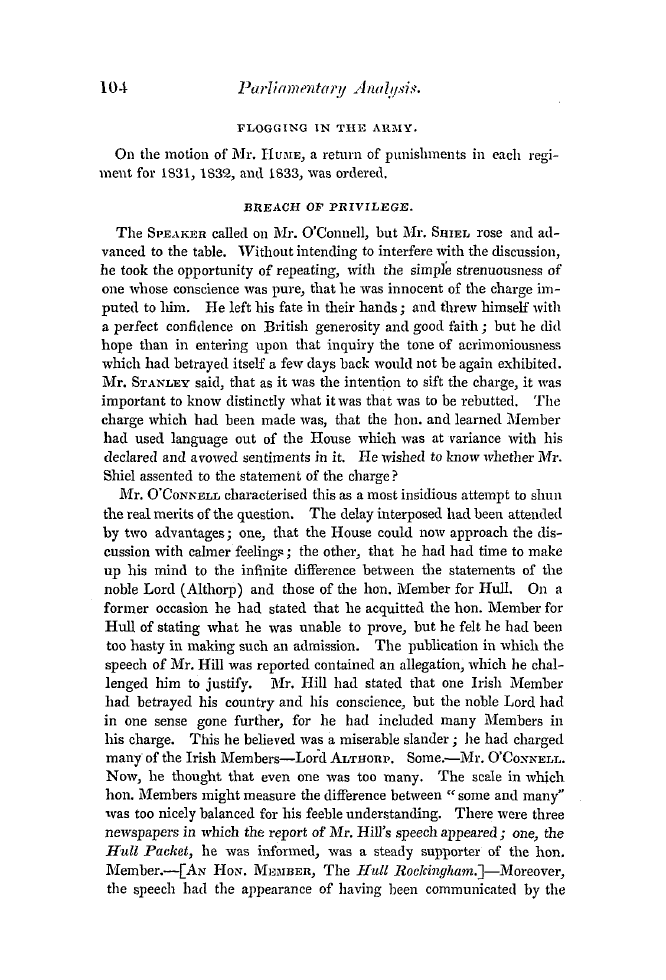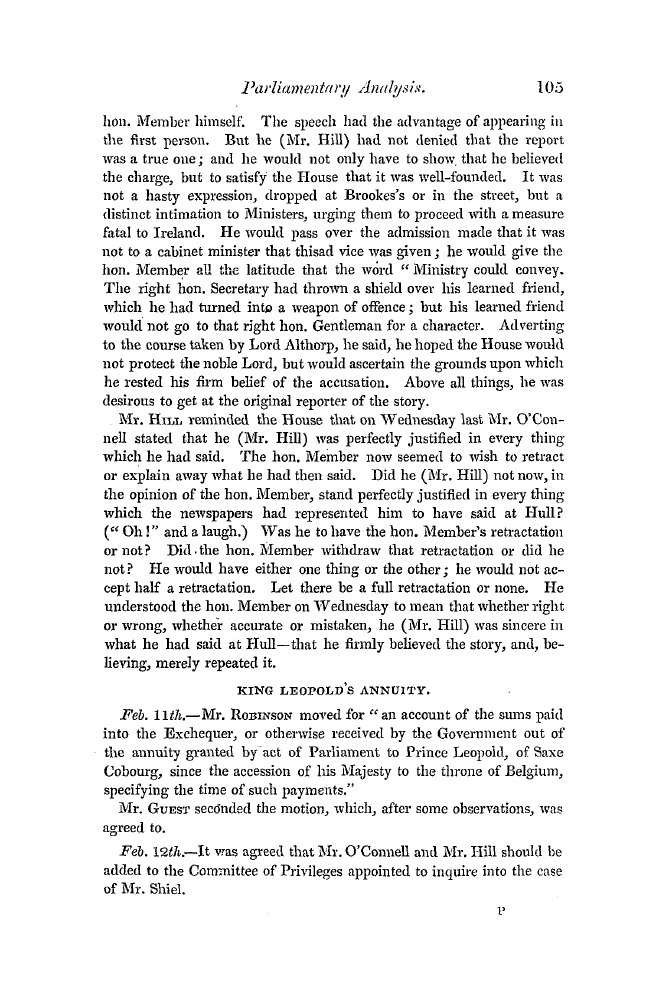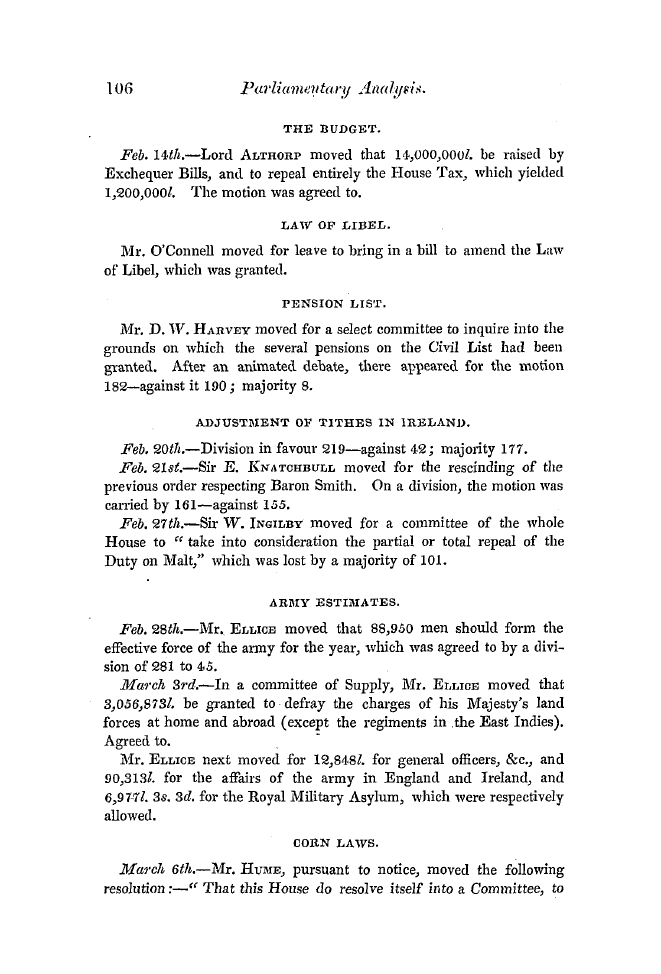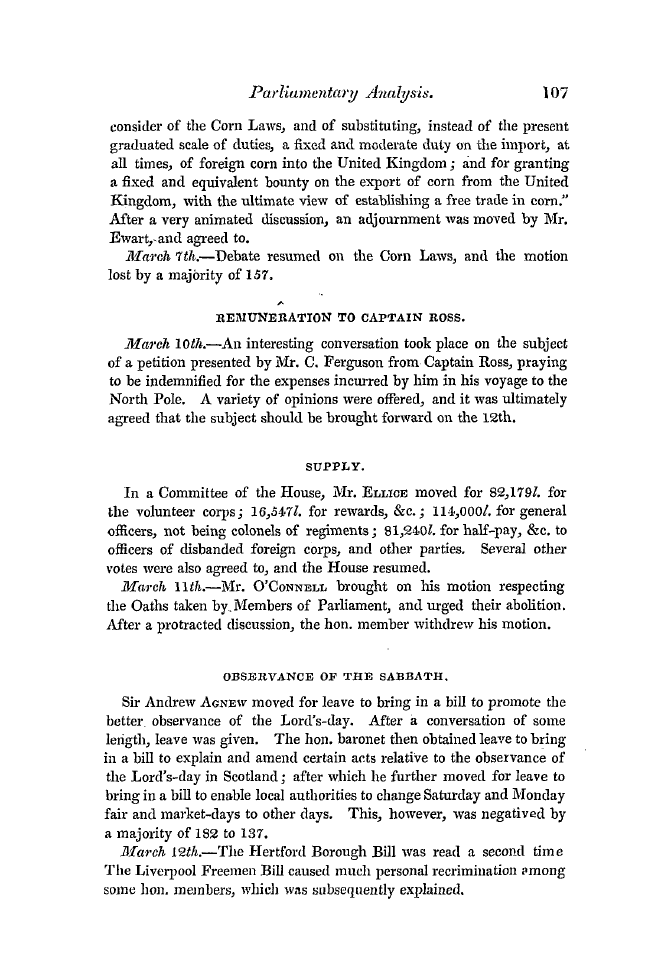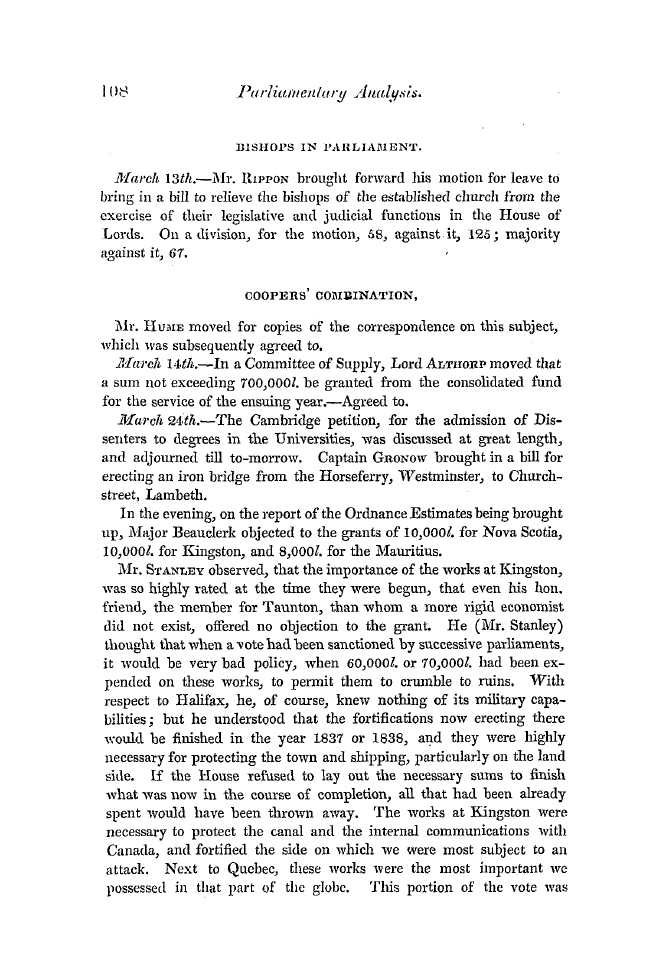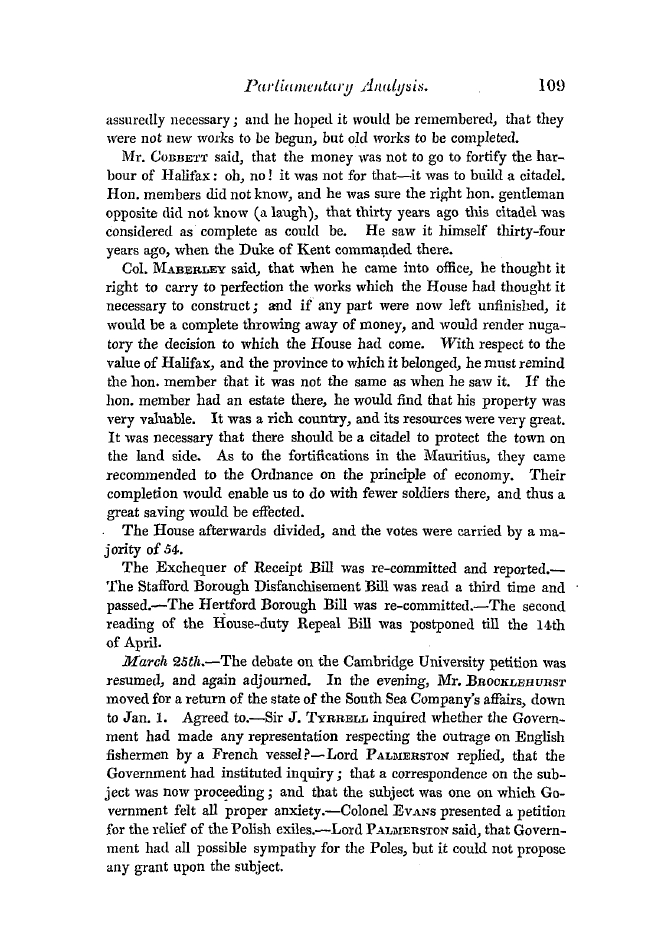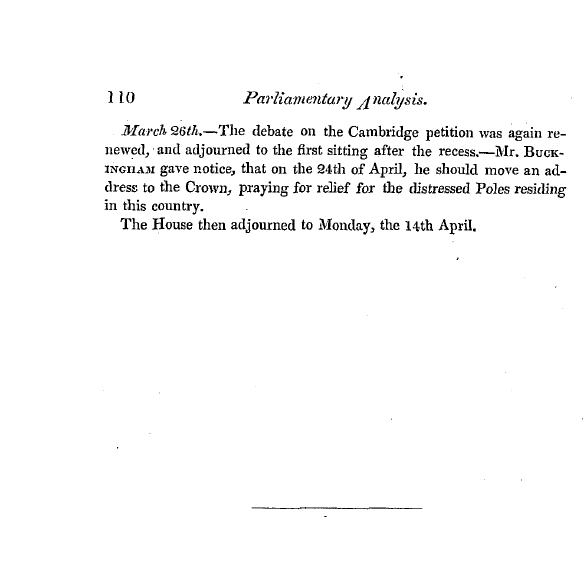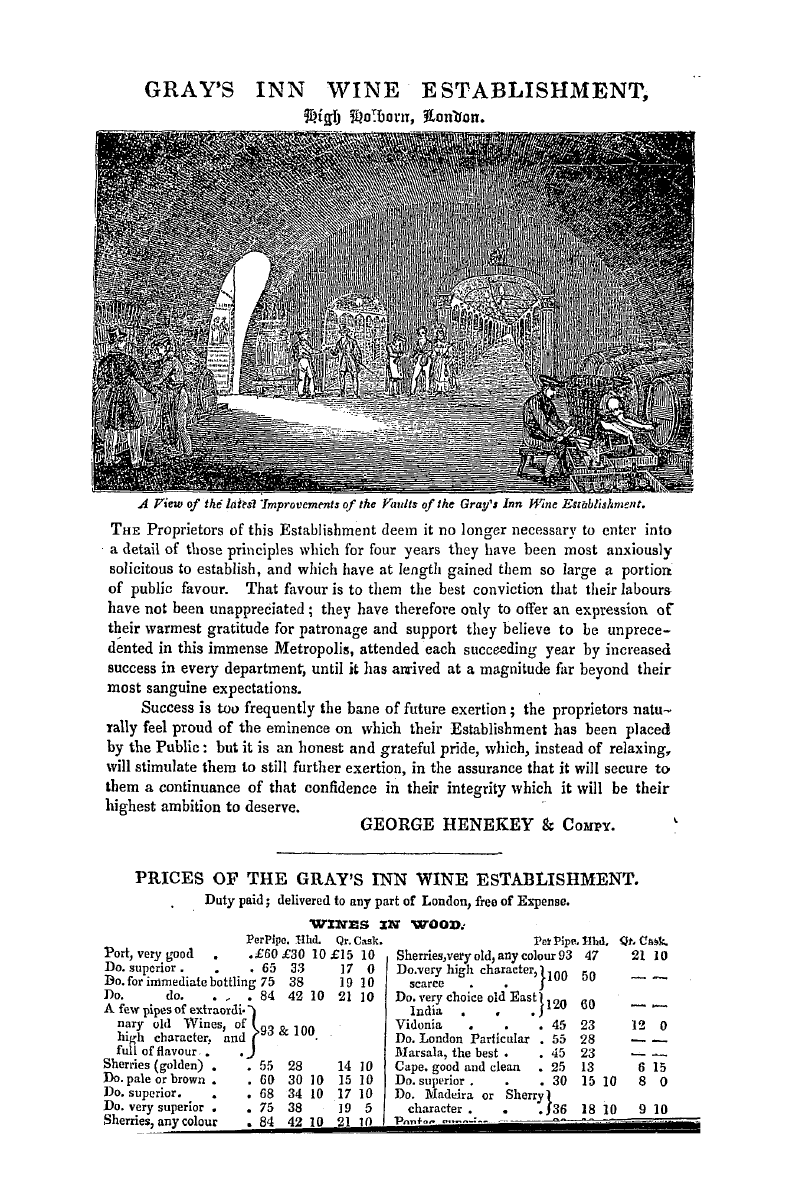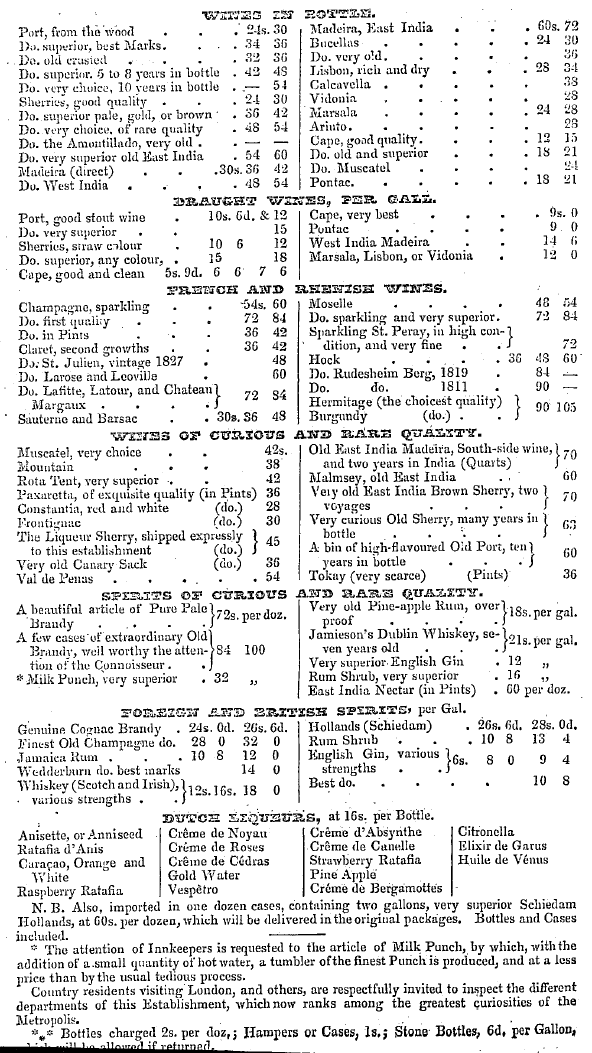Note: This text has been automatically extracted via Optical Character Recognition (OCR) software.
The Second Jubilee In Commemoration Of Handel.
eminent performers on different instruments of music , than any other city in Europe , there was not some public periodical occasion which would bring them all together ; by which means a performance might be exhibited on such a scale of magnificence , as could not be equalled in any part of the world . The death of Handel naturally presented itself to three such enthusiastic admirers of that great master , and it
immediately occurred that the next year ( 1784 ) ivould be a proper time for the introduction of such a custom , as it formed exactly a fourth of a century since his death , and a complete century since his birth . The plan was soon afterwards communicated to the Managers of the Musical Fund , who approved it , and promised their assistance . It was next submitted to the Directors of the Concert of Ancient Music , viz .:
Earl of Exeter , Earl of Sandwich , Viscount Dudley and AVard , Viscount Fitzwilliarn , Lord Paget , Right Hon . II . Morice , Sir AVatkin AVilliams AVynne , Bart . Sir Rich . Jebb , Bart ., who , with a readiness that did honour to their feelings of humanity as well as of music , voluntarily undertook the trouble of managing and directing the celebrity . The design at last coming to the knowledge of the king , it received the sanction of
his patronage . AVestminster Abbey was fixed upon as the properest place for the performance , as Handel was buried there ; and application was made to the Bishop of Rochester for the use of it , who readily consented , as the scheme was honoured with the king ' s jiatronage ; and who only requested , that , as the performance would interfere with the annual day of the AVestminster Infirmary * , a part of the profits might be applied
to that charity . This was agreed to , and it was afterwards settled that the profits of the first clay ' s performance should be equally divided between the Musical Fund ancl the AVestminster Infirmary . The profits of the other days were applied solely to the Musical Fund . The organ was taken down , and a grand gallery erected in the room , for the reception of the king and queen , and all the younger branches
the royal family of an age capable of relishing the performance , together with the royal attendants . Tliis gallery ivas hung with crimson velvet fringed with gold . Over the western door of the Abbey was erected a large new organ , -built by Mr . Green for Canterbury Cathedral , but fixed up in the Abbey for this occasion . The base of the orchestra , which contained a band of about five hundred vocal ancl instrumental
performers , was seven feet from the ground . In short , the whole formed a coup d ' ceil , equally novel , magnificent , and splendid . * Now called tlie Westminster Hospital . VOL . I . K .
Note: This text has been automatically extracted via Optical Character Recognition (OCR) software.
The Second Jubilee In Commemoration Of Handel.
eminent performers on different instruments of music , than any other city in Europe , there was not some public periodical occasion which would bring them all together ; by which means a performance might be exhibited on such a scale of magnificence , as could not be equalled in any part of the world . The death of Handel naturally presented itself to three such enthusiastic admirers of that great master , and it
immediately occurred that the next year ( 1784 ) ivould be a proper time for the introduction of such a custom , as it formed exactly a fourth of a century since his death , and a complete century since his birth . The plan was soon afterwards communicated to the Managers of the Musical Fund , who approved it , and promised their assistance . It was next submitted to the Directors of the Concert of Ancient Music , viz .:
Earl of Exeter , Earl of Sandwich , Viscount Dudley and AVard , Viscount Fitzwilliarn , Lord Paget , Right Hon . II . Morice , Sir AVatkin AVilliams AVynne , Bart . Sir Rich . Jebb , Bart ., who , with a readiness that did honour to their feelings of humanity as well as of music , voluntarily undertook the trouble of managing and directing the celebrity . The design at last coming to the knowledge of the king , it received the sanction of
his patronage . AVestminster Abbey was fixed upon as the properest place for the performance , as Handel was buried there ; and application was made to the Bishop of Rochester for the use of it , who readily consented , as the scheme was honoured with the king ' s jiatronage ; and who only requested , that , as the performance would interfere with the annual day of the AVestminster Infirmary * , a part of the profits might be applied
to that charity . This was agreed to , and it was afterwards settled that the profits of the first clay ' s performance should be equally divided between the Musical Fund ancl the AVestminster Infirmary . The profits of the other days were applied solely to the Musical Fund . The organ was taken down , and a grand gallery erected in the room , for the reception of the king and queen , and all the younger branches
the royal family of an age capable of relishing the performance , together with the royal attendants . Tliis gallery ivas hung with crimson velvet fringed with gold . Over the western door of the Abbey was erected a large new organ , -built by Mr . Green for Canterbury Cathedral , but fixed up in the Abbey for this occasion . The base of the orchestra , which contained a band of about five hundred vocal ancl instrumental
performers , was seven feet from the ground . In short , the whole formed a coup d ' ceil , equally novel , magnificent , and splendid . * Now called tlie Westminster Hospital . VOL . I . K .
































































